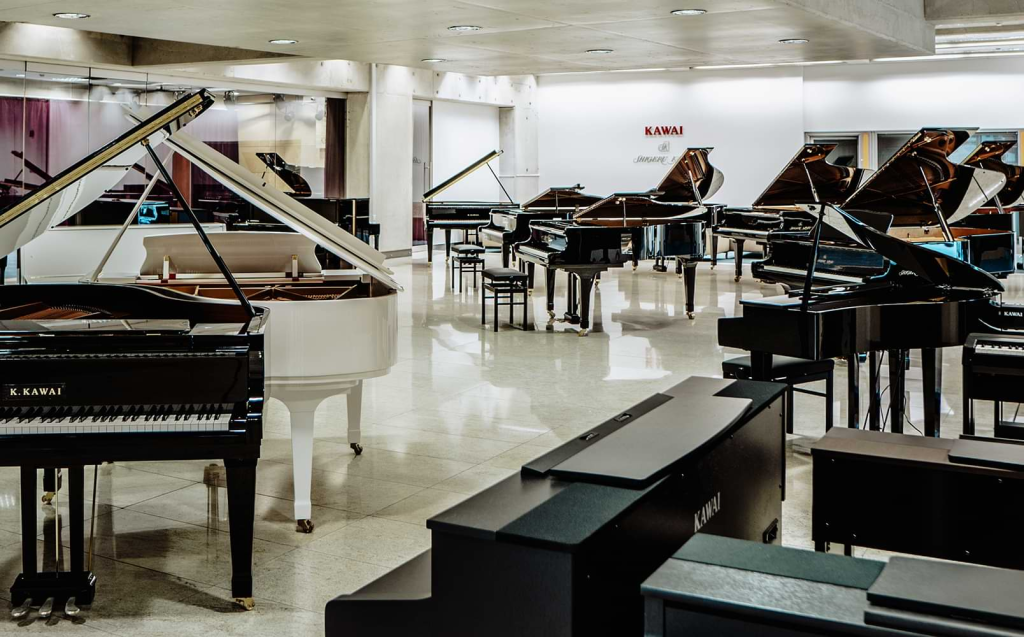Pianos in Europe: A Legacy of Innovation and Artistry
The piano’s rich history in Europe is one of constant innovation, passion, and craftsmanship. From the early developments in England to the cultural influence of Paris and the technical precision of Vienna, European piano makers set the foundation for the modern instruments we admire today. Understanding this heritage deepens our appreciation for pianos and reinforces why specialized care is essential when moving and storing these remarkable instruments.

The Birth of the English Grand Piano
Americus Backers and the English Grand Revolution
Around 1772, Americus Backers, with assistance from John Broadwood and Robert Stodart, developed the first English grand piano action.
These advances led to the creation of the Stodart and Broadwood grands, which were among the first musically significant pianos built in England.
Broadwood’s Contributions to Piano Design
Throughout the 1800s, John Broadwood & Sons made numerous innovations, particularly in piano wire and instrument scaling. Broadwood’s commitment to craftsmanship resulted in upright, square, and grand pianos that gained widespread popularity across Europe.
One testament to Broadwood’s influence is the deep appreciation held by Ludwig van Beethoven, who famously treasured his large Broadwood grand piano. This personal connection to musical giants underscores Broadwood’s lasting importance in piano history.
French Piano Makers: Elegance and Innovation in Paris
The Rise of French Piano Builders
Although English designs influenced early French piano building around 1800, Paris soon established itself as a hub of cultural and musical sophistication.
Leading companies like Erard, Pleyel, Kriegelstein, and Herz rose to prominence, gracing the salons and concert halls of France with their beautifully crafted instruments.
Chopin, Liszt, and the Parisian Sound
Renowned composers and pianists such as Frédéric Chopin and Franz Liszt championed the superior quality of Erard and Pleyel pianos. Their endorsements solidified the reputation of French pianos during the 19th century, helping them gain international prestige.
Sebastien Erard’s Lasting Impact
Sebastien Erard stands out for his inventive spirit, holding numerous patents that transformed piano design. His most influential contributions include:
- The Agraffe: A metal stud that stabilizes the string’s position near the tuning pins for better sound clarity.
- The Double Escapement (Repetition) Action: A groundbreaking mechanism allowing faster repetition of notes, a feature still found in modern grands.
Although Erard relocated to England in the early 1800s, many exceptional Erard pianos were built in London, blending English craftsmanship with French artistry.
The Viennese and German Piano Tradition
Vienna: The Heart of Classical Piano Evolution
In Vienna, the 18th and 19th centuries brought forth a golden era of piano construction. Notable builders such as Walter, Stein, Streicher, Graf, and Bösendorfer shaped the Viennese sound that became synonymous with clarity and elegance.
Musical Giants and Their Instruments
Pianists and composers, including Mozart, Beethoven, Schubert, Mendelssohn, and Brahms, favored Viennese and German pianos. These instruments accompanied the birth of some of the most iconic compositions in classical music.
Technical Evolution in Viennese Piano Making
Structural Improvements During Beethoven’s Era
During Beethoven’s lifetime, the piano underwent significant technical enhancements:
- Expanded octaves (increasing the musical range)
- Heavier frames for durability
- Improved wire quality for stronger, more resonant sound
While American builders like Chickering and Steinway quickly embraced overstringing (bass strings crossing over treble strings for increased power), Viennese and German builders remained cautious.
They believed that straight-strung designs preserved a cleaner, purer tone — a characteristic still admired today in fine Viennese pianos, such as Bösendorfer and Streicher.
The Unique Viennese Piano Action
One major point of contrast between Viennese pianos and their contemporaries lies in the action mechanism:
- Traditional Viennese Action: The hammer and shank are mounted on the back of the key, facing in the opposite direction compared to modern designs.
- Modern Repetition Action: Found in today’s grand pianos, it enables faster note repetition and a broader dynamic range.
Bösendorfer continued using the classic Viennese action until as late as 1909, offering pianists a lighter, more responsive touch reminiscent of early fortepianos.
Musicians often find playing an old Viennese piano to be a delightful experience, noting its uniquely playful and expressive touch.
Preserving the Legacy: Why Professional Piano Care Matters
Whether you own a vintage Broadwood, a delicate Erard, or a treasured Bösendorfer, each piano carries centuries of innovation and artistry within its frame.
This heritage is why moving and storing a piano demands not only physical strength but a deep understanding of the instrument’s design and fragility.
At Keyboard Carriers, we treat every piano move with the respect it deserves. Our professional team specializes in the careful transportation and storage of grand pianos, upright pianos, and organs throughout Denver, CO, and the surrounding areas.
Contact Keyboard Carriers for Expert Piano Moving Services
Trust your piano with professionals who understand its history and value.
👉 Contact Keyboard Carriers Today for all your piano moving and storage needs in Denver and beyond!
